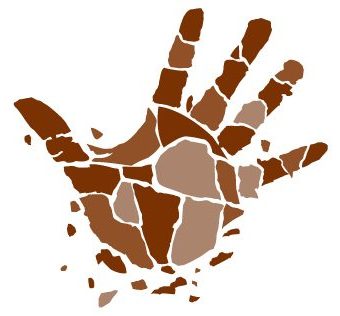Namibian Pavilion
Biennale Arte 2022 Venice
The National Pavilion of Namibia “A Bridge to the Desert” will make its debut at the 59th International Art Exhibition – La Biennale di Venezia with the Land Art project “The Lone Stone Men of the Desert” by RENN
April 23rd – November 27th 2022
(pre-opening on April 20, 21 and 22)
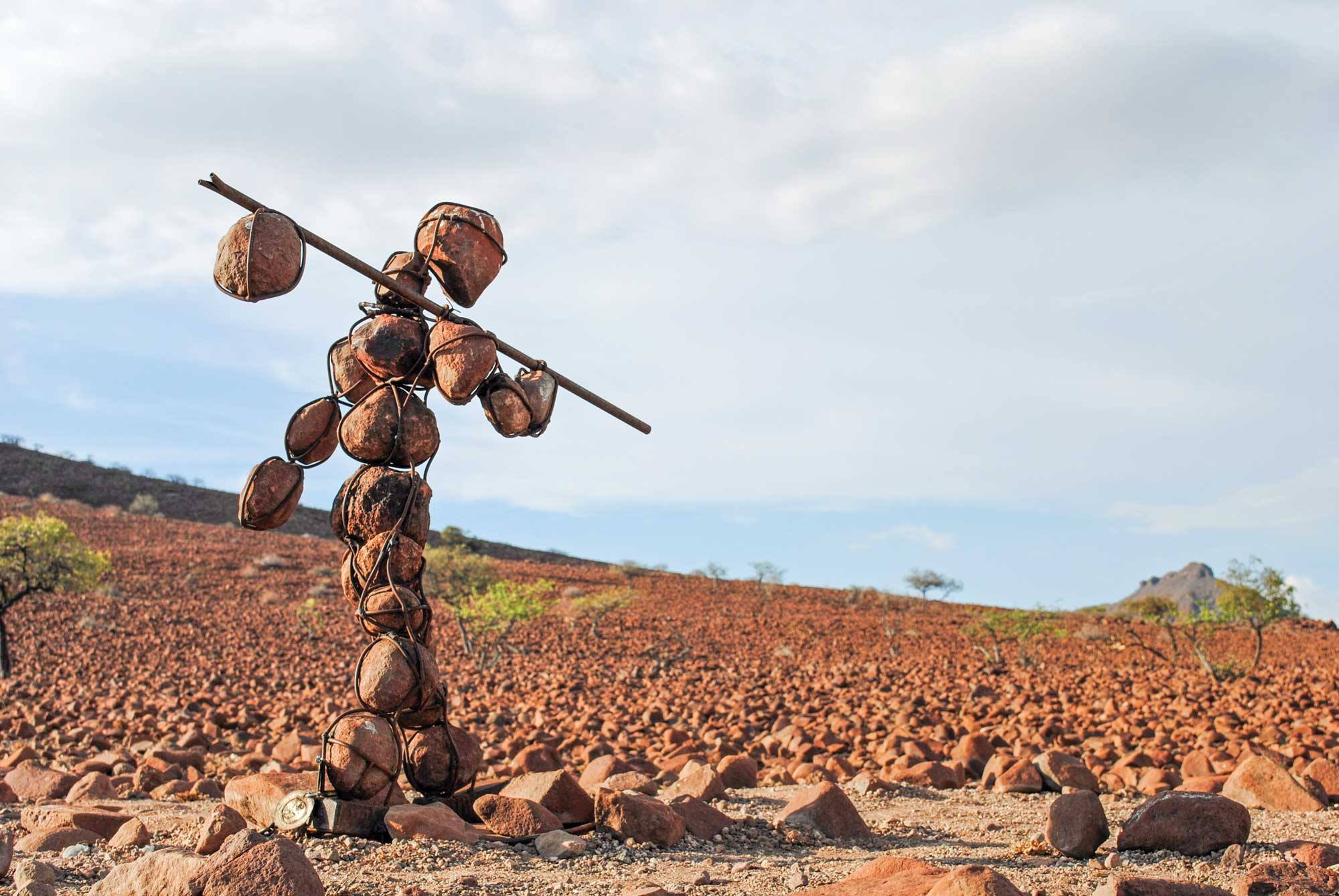
The Lone Stone Men of the Desert
Human-like sculptures disseminated in the oldest desert in the world, lonely and looking for each other. It calls for a reflection on sustainability and cultural interactions. Those who created them ask to remain anonymous and to be named under the pseudonym “RENN”. Art Before Artist is the purpose.
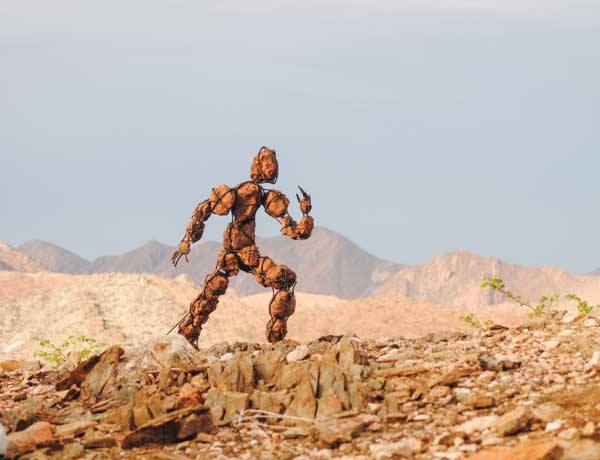
“On my way to 1”
Number 15
Desert stone, steel rod
h.150cm
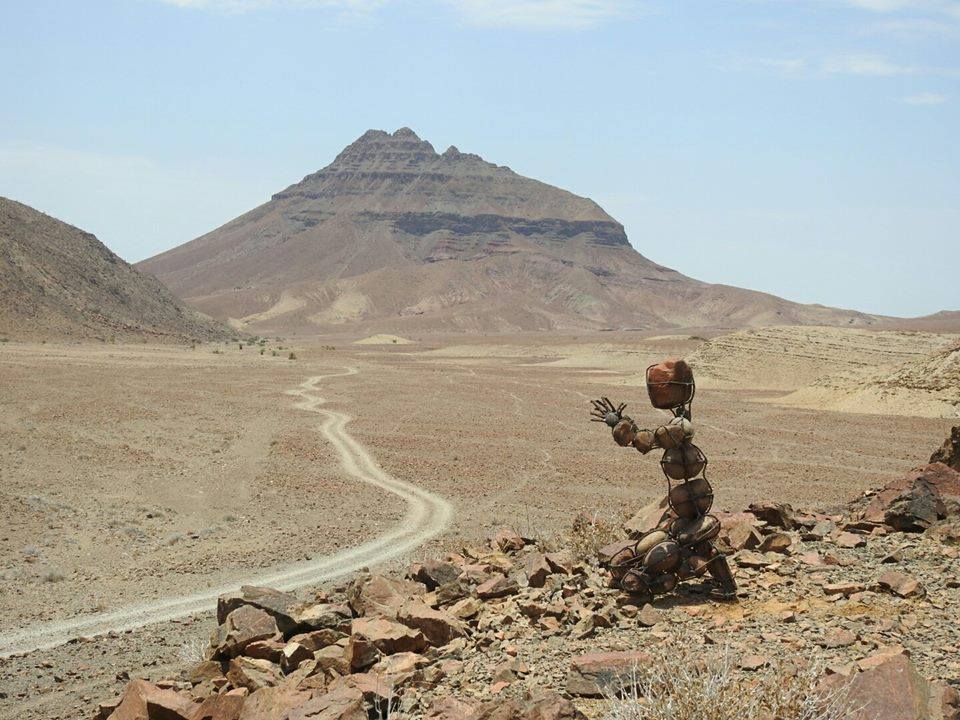
“Believe me”
Number 5
Desert stone, steel rod
h.120cm
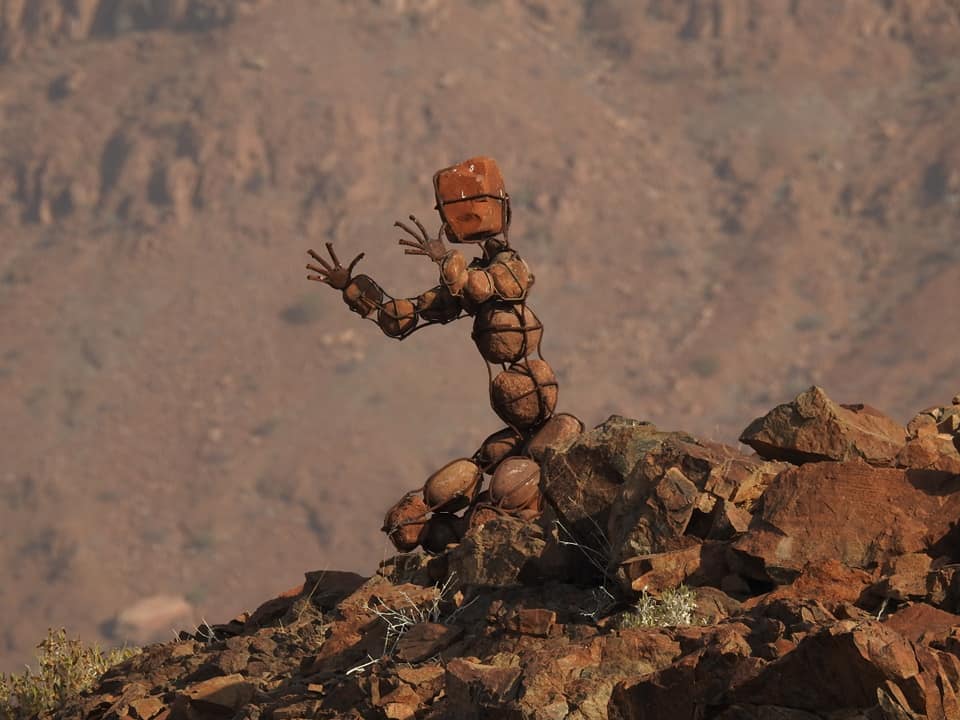
“Why”
Number 12
Desert stone, steel rod
h.120cm

“Waiting for the sun”
Number 23
Desert stone, steel rod
h.150cm
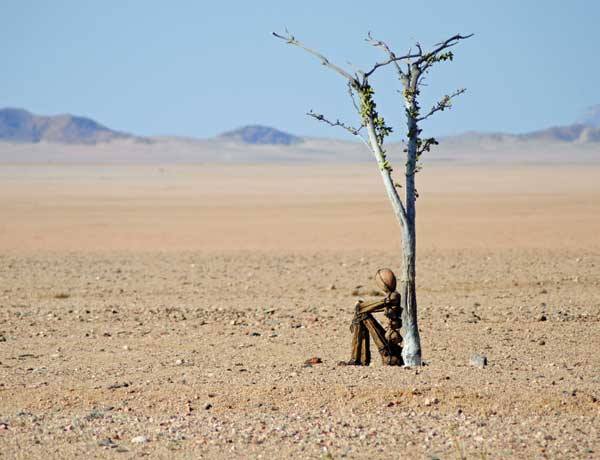
“I was thinking”
Number 15
Desert stone, steel rod
H. 100cm
“A bridge to the desert” is a game of allusions to which everyone must be free to give their own interpretation. It is also RENN’s invitation to enjoy the works in total freedom, free from any influence, first and foremost from the personality of the Artists, who from the very start did not want to put their name to the works.
However, in a monograph readers try to look for a clue, an opinion that they can consider. An editor cannot avoid offering some suggestions at least. Here are some interpretations, limiting ourselves to the most immediate: the first bridge is precisely that of the exhibition, within the 59th Biennale Arte, which presents to an international audience this work that was originally entrusted to the care of the oldest desert in the world. But the work itself is also a bridge that invites reflection on the relationship between the different human cultures, represented by the sculptures scattered around the desert. A bridge that is reflected in the conceptual mirror of all the statues taken together, which represent the human race as a species, in turn called upon to reflect on its own place in nature. This nature has an essential beauty, consisting of colors, shadows, spaces and times that are typical of a place as far away from today’s artificial habitat as what Aristotle called “the social animal” and that today we ought to call “the artificial animal”: ethologists have shown that many other species have social structures, build, and use tools, but only humankind has detached itself from nature to such an extreme extent and positioned itself outside it, shaping it to its liking, from the bowels of the earth to space, from the depths of the sea to the constituent components of its genetic heritage. By choosing to have these stone figures communicate with these primordial natural surroundings, almost older than life itself, in landscapes that appear to belong to some as yet uninhabited planet, it is possible to sense the call to reflect on this extraordinary event in the universe’s history: the result of billions of years of the chance evolution of particles that make up the very fabric of time and space, the atoms, the molecules, the galaxies, the planets, and then the seas, before the advent of the primordial bubbles of systematic organic material that developed into “endless forms most beautiful and most wonderful”* that are increasingly complex and interconnected, until the appearance of one of these forms capable of studying all the others and all this, tearing the veil of mystery beyond the limited abilities of its sensory apparatuses to comprehend the mechanisms of nature itself, going so far as to bend them to its needs and wishes. This product of chance evolution that can now excuse itself from the basic mechanisms that created it and that have created all nature must now reckon with this divine power to overturn chance and invent progress: in a universe where everything is down to chance, it has to invent good and evil, right and wrong. How is it possible not to feel like petrified individuals lost in the desert?
Read more
A Non-Profit Association
The project is promoted by Lone Stone Men of the Desert non-profit association, whose goal is to bring Namibian Art to International attention. The Biennale Arte 2022 is the first stage on a path to contribute to the acknowledgement of the artistic development of Namibia, working hand in hand with local cultural institutions in long-term projects at the national and international level. The objective is to support the tangible and intangible cultural heritage of the country in order to value its cultural wealth and national identity. All funds raised will be used for this purpose.
By supporting the debut of the Namibian Pavilion at the 59th International Art Exhibition – La Biennale di Venezia you will seize the opportunity to support a project with a global and iconic value.
According to Kant “genius is the mean through which nature gives its rules to art”, according to us, you can be the fire to warm up a Lone Stone Men’s heart.
PARTNERS, SPONSORS & SUPPORTERS
Supporters
Anders Johansson
Beatrice e David Pritzker
Fritz Vorster
Lucia Vullo e Angelo Varvello
Paolo Colombini
Hennie Goldenhuys
Jan Grobler
Glenda Manthe
Hella Gobel
Contacts
Communication, Press Office & Media Relations
AFF Comunicazione – Alessia Fattori Franchini
press@affcomunicazione.it
Team & credits
Commissioners:
Marcellinus Swartbooi – Senior Art Education Officer of the Directorate of Arts: Ministry of Education, Arts and Culture.
Curator:
Patronage:
Namibian Ministry of Education, Arts and Culture
Minister – Ester Anna Nghipondoka
Executive Director – Sanet Steenkamp
In Collaboration with:
Namibian Embassy in France and Italy
Albertus Aochamub, Auguste Nyambali
Namibian Honorary Consulate in Italy
Petter Johannesen, Valeria Tienghi
The Namibian Pavilion is grateful to everyone who helped realize the exhibition:
Production
The project is promoted by Lone Stone Men of the Desert Non-Profit association, whose goal is to bring Namibian Art to International attention. The Biennale Arte 2022 is the first stage on a path to contribute to the acknowledgement of the artistic development of Namibia, working hand in hand with local cultural institutions in long-term projects at a national and international level. The objective is to support the tangible and intangible cultural heritage of the country in order to value its cultural wealth and national identity. All funds raised will be used for this purpose.
Exhibition Creative Direction: AMEBE
Curatorial Researcher: Stefano Morelli
Head of Communication: Jessica El Hefyan
Engineering Consultant: Eng. Andrea Bondì
Environmental Consultant: Emiliano Molin
Creative Content: CLEOPATRA.SRL – graphic design, digital design, new media, social media, set design, photo, video, visual, copy and event by Claudia Biondini, Carola Cometto, Regina Colindrez, Alessandra Mantovani, Margherita Magatti, Michela Natella, Sabrina Trevisan, Ginevra Scipioni, Caterina Viganò, Lorenzo Taccetta.
Exhibit Designer: Filippo Zonno
Landscape Desert Photos: Roland Blum
Light Designer: Giulia Pastore
Photo Editor: Alberta Cuccia
Video Director: Carlo Corbellini
Catalog Consultant: Ludovica Vigevano
Consultant & Support: Giulio Ceruti
Pavilion Coordinator: Francesca Martinuzzi
Accounting: Studio Signoriello Roma
Legal Assistance: Avv. Lorenzo Vigevano
Communication, Press Office & Media Relations:
Alessia Fattori Franchini – AFF Communication
Event Planner: Camilla Zanon Curci
Special Thanks to:
Roberto D’Agostino, Enzo Torri, Cecilia Montalbotti, Giovanna Saladanna, Simone Battani, Studio Caramob, Studio Grace, Andrea Menegotti, Ing. Roberto Zago, Cristina Gatti, Carlotta Zancope, TARIN.
Special thanks to all the passionate professionals, companies and individuals that supported the creation of the Pavillion either providing services pro bono or at cost. Time and effort exceeded donations and motivated everyone to make this debut the best possible.
The warmest thank you to RENN’s family and friends who hosted and supported the work in Namibia.
Patronage
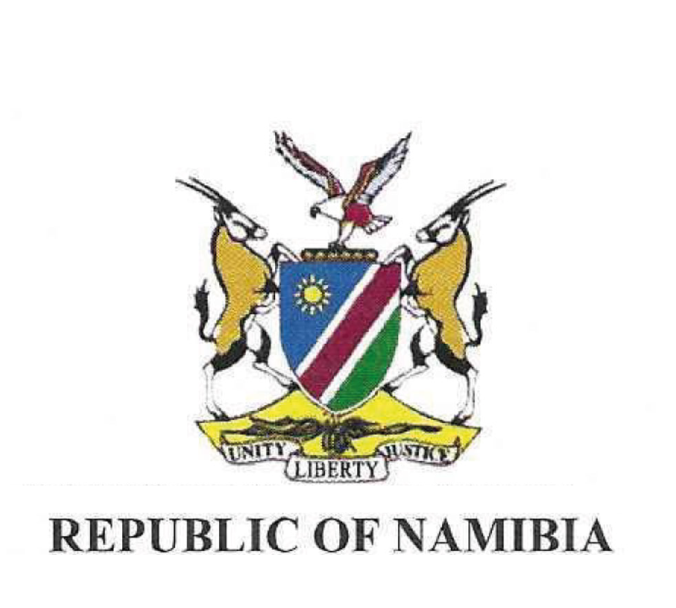
Republic of Namibia








